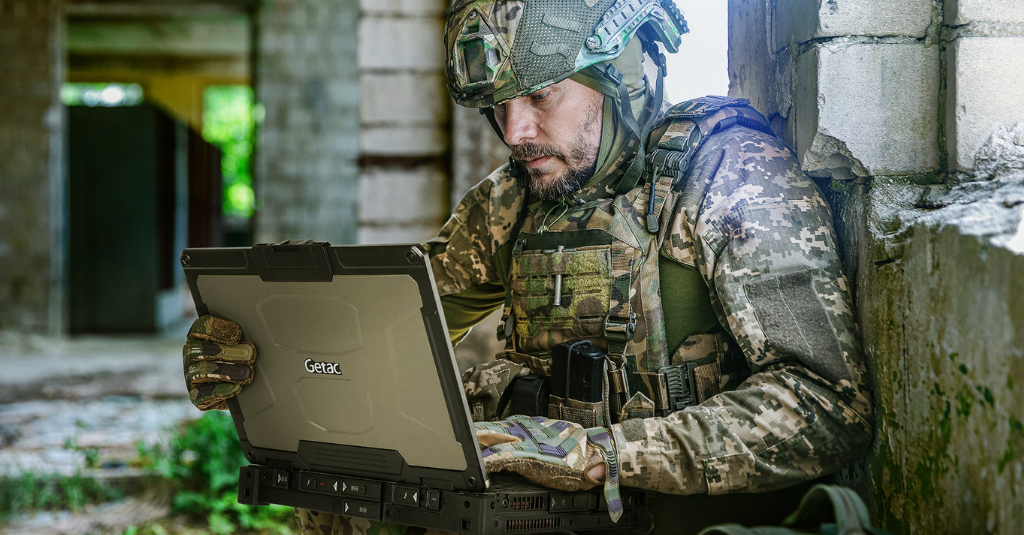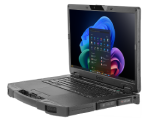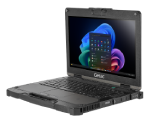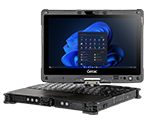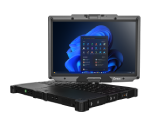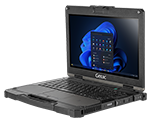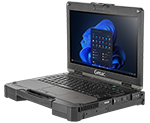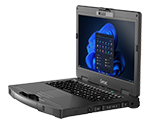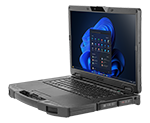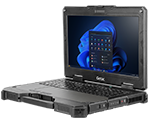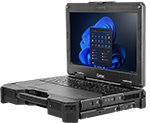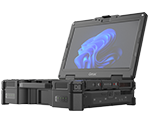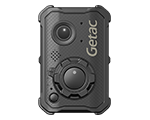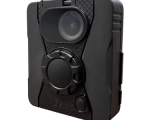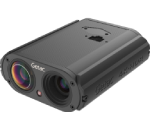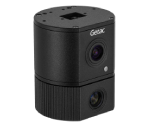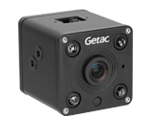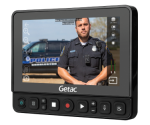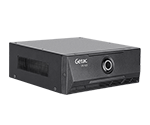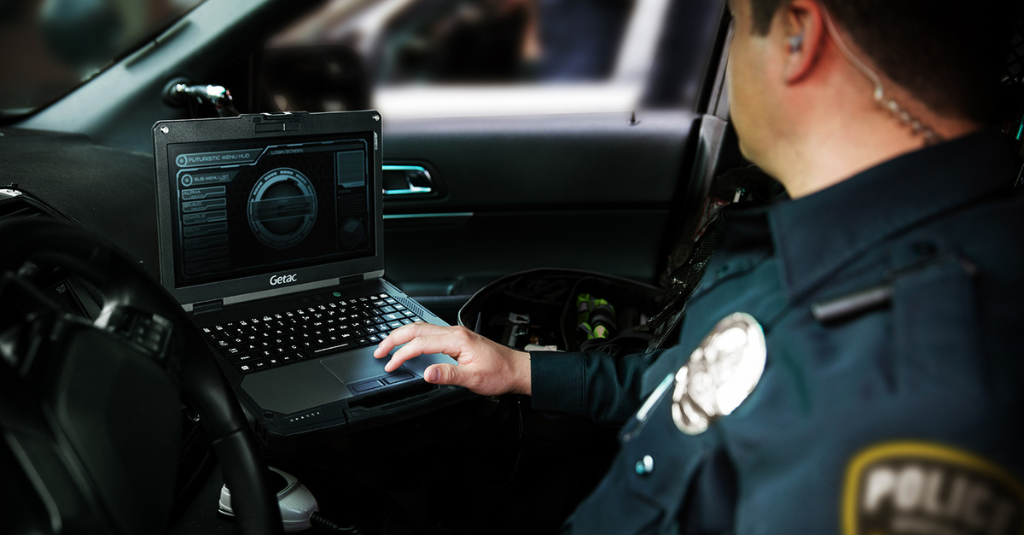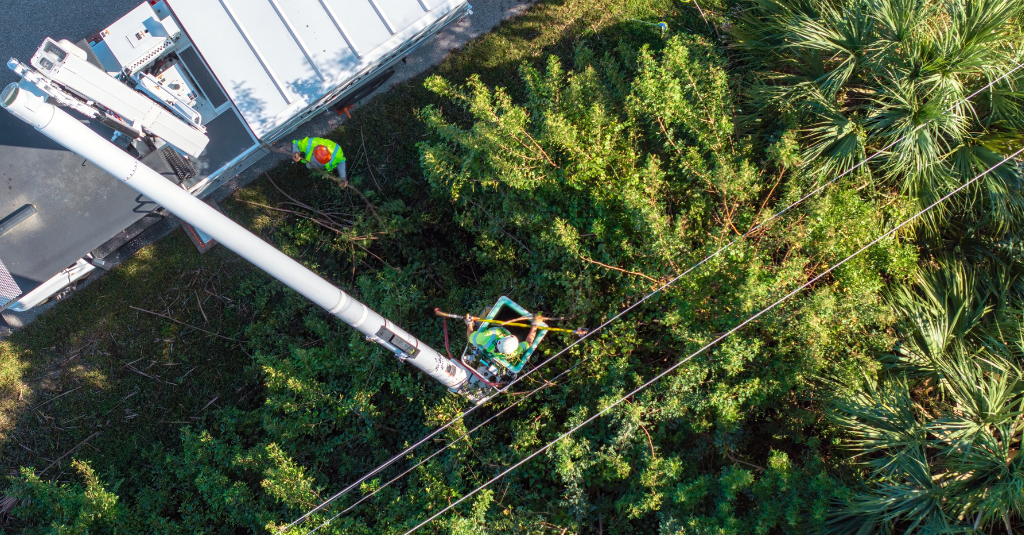The Getac Difference: Purpose-Built Solutions
Getac collaborates directly with law enforcement agencies through our Getac Select Program to create solutions that address real-world challenges. These solutions enable agencies to stay ahead of criminals who exploit advanced technologies for illicit activities.
Our Approach
- Pre-Configured Bundles: Designed around common police use cases.
- Collaborative Engineering: Our teams of rugged solution experts work alongside departments to refine, customize, and personalize each deployment.
- Future-Ready Systems: With upgrade paths and support contracts, Getac devices and system solutions evolve alongside your department’s needs.
- Flexible for Any Budget: Scalable solutions serve agencies of all sizes—from metropolitan forces to rural sheriff’s offices.
Results You Can Count On
- Integrated Video Systems: Body and dash cam footage synced automatically for faster reporting.
- Multilingual Reporting: Utilizing onboard voice recognition and translation tools enhanced report accuracy across diverse communities.
Advanced Security: Devices equipped with fingerprint scanners and locked ports safeguard data during high-risk operations, ensuring secure access and protection.
Social Media Monitoring: Getac’s solutions enable law enforcement to conduct social media monitoring, supporting intelligence gathering and investigations while adhering to ethical guidelines and legal boundaries.
Looking Ahead: Custom Tech as a Force Multiplier
The role of police and technology is expanding. Custom, rugged tech solutions are no longer luxuries—they’re strategic necessities. As digital threats become more sophisticated, law enforcement must respond with smarter, more adaptive tools. Agencies must be aware of the ethical and legal challenges associated with adopting new technologies and ensure the responsible and transparent implementation of these technologies.
At Getac, we’re committed to helping police departments meet today’s demands while preparing for tomorrow’s challenges. We don’t just build hardware. We build operational confidence, officer safety, and public trust.
Explore what’s possible. Connect with Getac today to see how our rugged, customized solutions can help modernize your agency and empower your officers.
Frequently Asked Questions (FAQs)
1. Why are custom rugged solutions essential for modern law enforcement?
Custom rugged solutions are engineered specifically for the demanding conditions of police work—offering durability, security, and performance beyond what standard consumer devices can provide. They ensure reliable communication, data integrity, and operational readiness in critical moments.
2. How do rugged devices enhance officer safety and efficiency?
Rugged devices enable real-time access to data, GPS tracking, and live communication with dispatch centers. Features such as hot-swappable batteries, glove-compatible touchscreens, and body-worn cameras enhance field visibility and reduce downtime, directly improving officer safety and response times.
3. What’s the difference between a rugged and a consumer-grade device?
Rugged devices meet military-grade durability standards (like MIL-STD-810H) and environmental protection ratings (such as IP65 or higher). Unlike consumer-grade devices, they are built to withstand extreme temperatures, vibration, moisture, and impact—ideal for mobile, unpredictable environments.
4. How does AI support modern policing?
AI-powered tools analyze large datasets to identify patterns, connect incidents, and forecast criminal activity. By integrating AI into rugged systems, officers can perform predictive policing, digital forensics, and data-driven investigations more efficiently while maintaining compliance and accountability.
5. What are the security requirements for police technology?
Law enforcement technology must feature BIOS-level protection, encrypted storage, biometric authentication, and integration with secure systems like RMS (Records Management Systems) and CAD (Computer-Aided Dispatch). These safeguards ensure that sensitive data remains protected from cyber threats.
6. How does Getac collaborate with law enforcement agencies?
Through the Getac Select Program, Getac works directly with agencies to design tailored hardware and software bundles that align with operational needs. This collaborative approach ensures each department receives solutions optimized for its specific mission profile, environment, and budget.
Glossary of Key Terms
AI (Artificial Intelligence):
Technology that enables computers and devices to analyze data, recognize patterns, and make predictions—used in law enforcement for analytics, predictive policing, and digital forensics.
Body-Worn Camera (BWC):
A portable recording device worn by officers to capture audio and video during interactions. BWCs improve accountability, evidence accuracy, and public trust.
CAD (Computer-Aided Dispatch):
A digital system used by dispatchers to communicate with field officers, manage incidents, and track resources in real time.
Forensic Analysis:
The process of examining digital or physical evidence to support investigations, often aided by AI-enabled tools and rugged computing platforms.
IP Rating (Ingress Protection):
A standardized measurement of a device’s resistance to dust and water. Higher IP ratings indicate better protection in challenging field environments.
MIL-STD-810H:
A U.S. military standard that certifies a device’s ability to withstand environmental stress such as shock, vibration, humidity, and temperature extremes.
Predictive Policing:
An AI-driven approach that uses data analytics to forecast potential crime locations or patterns, enabling proactive deployment of resources.
RMS (Records Management System):
A secure database used by law enforcement agencies to manage, store, and retrieve case reports, incident logs, and digital evidence.
Rugged Device:
A computing device designed to operate reliably under harsh conditions, often featuring reinforced casings, sealed ports, and extended battery life.
TCO (Total Cost of Ownership):
A financial metric evaluating the long-term costs of a device, including maintenance, downtime, and replacement. Rugged devices typically have a lower TCO than consumer-grade alternatives.
